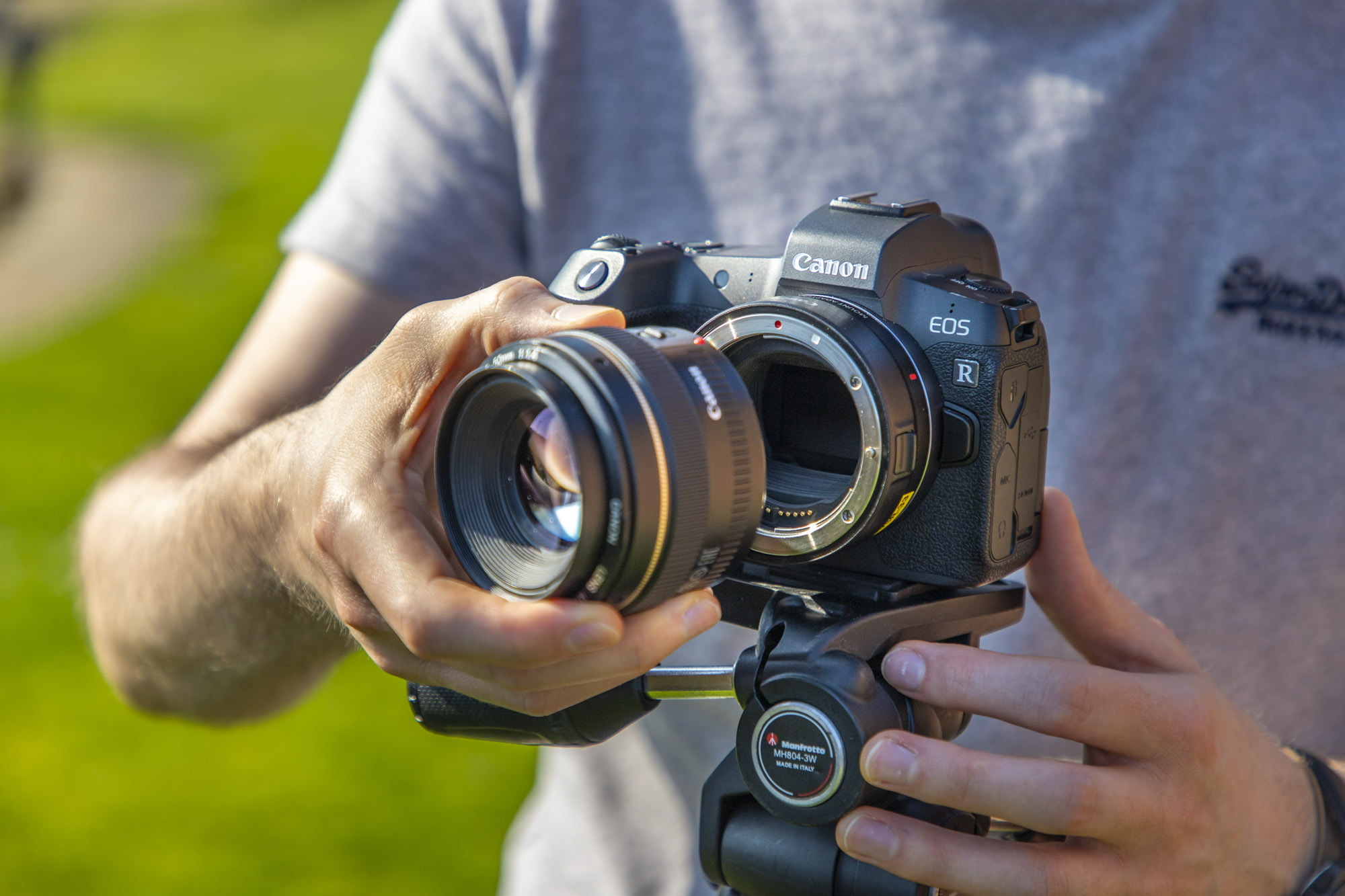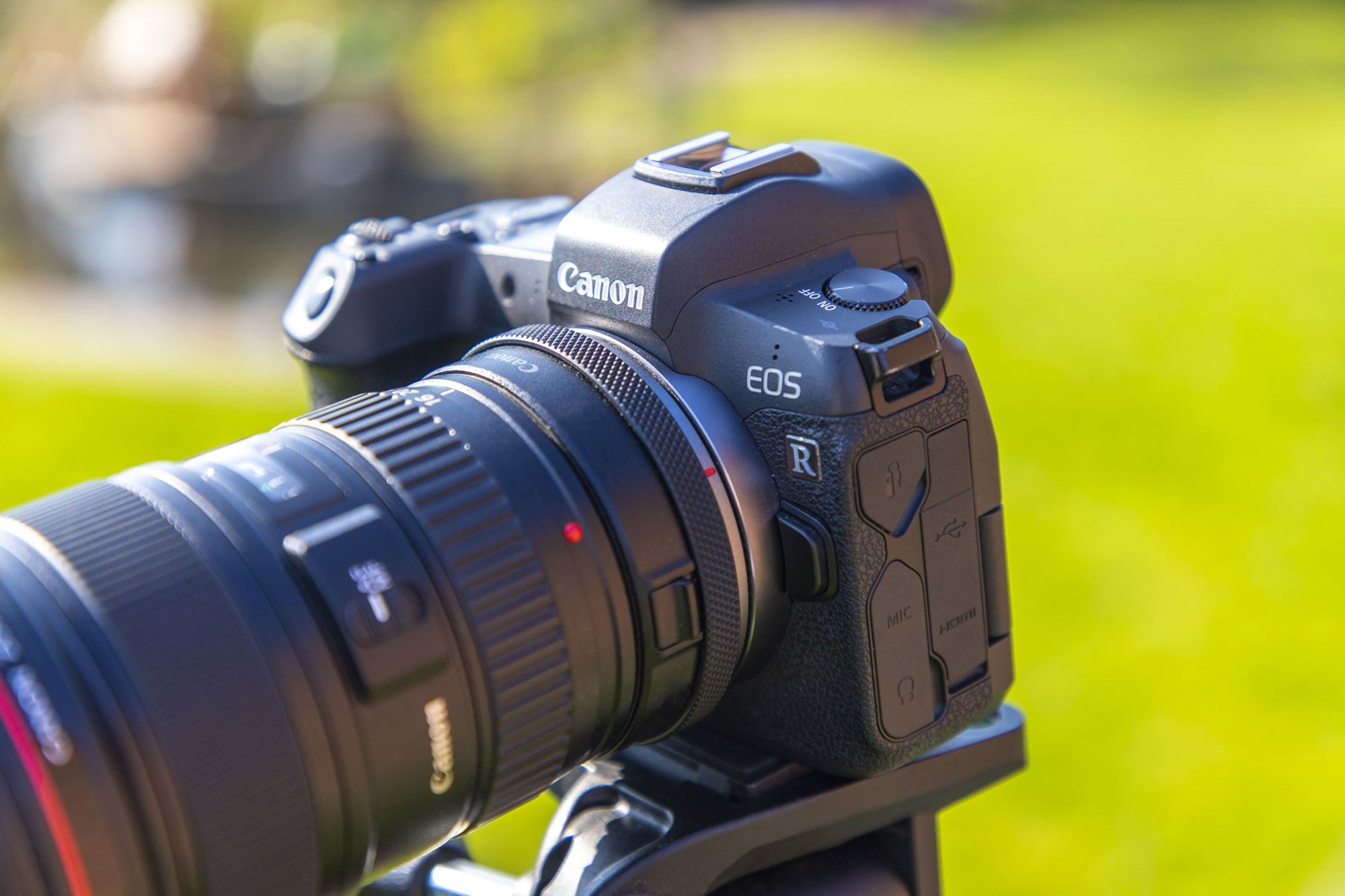
With Canon’s EOS 850D being the last Canon DSLR to be released, all the way back in February 2020, Canon users have been given little option other than to switch to mirrorless when looking to upgrade if we want the latest and greatest camera innovations and new technology.
We’re sure that, like us, you have also had to face the tricky dilemma of what to do with your collection of old Canon EF and EF-S lenses for your DSLR. Do you keep them with your old camera as a backup or trade them in to get some cash towards your mirrorless purchase? In this project, we look at a third option: using one of Canon’s EF-EOS R adapters (of which there are several iterations) that enables you to continue using your old lenses with the new EOS R series of mirrorless cameras.
• DSLR and mirrorless – these are the best Canon cameras
The four adapters we’re looking at here are: the standard EF-EOS R, which enables you to use your EF lenses on a full-frame mirrorless EOS R with autofunction and lens communication; another adapter with a control ring, which has become commonplace in the latest RF lenses; and two drop-in filter variants that enable you to use a drop-in polarizer or variable neutral density filter behind the rear element of the lens, so can work with any EF lens, even if it has a bulbous front element and no front filter thread. In this project, we examine each one closely to find out which is the best option.
1. 'Standard' EF-EOS R adapter
The EF-EOS R Mount Adapter is the standard version Canon makes, enabling you to fit your collection of old Canon EF or EF-S lenses to its new mirrorless full-frame RF mount bodies, such as the EOS R6. It’s also the most budget-friendly of the four adapters we look at here.
The adapter increases the flange distance caused by having a mirror in Canon’s DSLRs but this is absent on mirrorless models, and the spacer allows the older lenses to be used correctly. These adapters also feature electronic connectors so that lens and camera communication is possible, which means you can adjust your aperture and use features like autofocus without a hitch.
2. Control Ring Mount Adapter EF-EOS R
The Control Ring Mount Adapter for EF-EOS R gets an upgrade in the form of a control ring, which has become commonplace on Canon’s RF lenses. It enables you to control settings in much the same way as the command dials on the camera body control the aperture and shutter speed.
The best camera deals, reviews, product advice, and unmissable photography news, direct to your inbox!
We find the extra dial handy for quick ISO adjustments when using your old EF optics. To set up the control ring, press the Menu button and scroll through the Function menus until you see Customize Dials, where you can make changes to your front and rear command dials, as well as assign a function to the control ring on the adapter.
3. Circular polarizer
A circular polarizing filter is essential for a number of photographic disciplines, but perhaps most notably for increasing punchy blues in skies when shooting landscapes, and for reflections in water or metal and glass, which make them useful for product and automotive photography, too.
This adapter from Canon uses the Drop-In Filter Mount Adapter for EF-EOS R and comes loaded with a removable C-PL filter. “Circular” refers to the pattern etched on the glass and not the shape of the filter itself. A wheel on the drop-in filter is used to turn the polarizer in order to change its strength, and is a breeze to fine-tune even when your eye is looking through the EOS R camera’s electronic viewfinder (EVF).
4. Variable ND filter
Just like the circular polarizer drop-in adapter, the variable neutral density (VND) adapter uses the same Drop-In Filter Mount Adapter EF-EOS R housing, and can be bought separately without the housing, which would save a little money. The great thing about these adapters is that the filters are positioned behind the rear element of the lens, so filters can be used even with wide lenses that have a bulbous front element and no front filter thread – when these optics would usually require an elaborate and expensive filter housing.
• These are the best neutral density filters.

VND filters enable you to gradually block out light for slower shutter speeds, blocking out 1-stop of light at the minimum setting and a whopping 9-stops at the maximum setting. Variable ND filters are great for video use, too.
PhotoPlus: The Canon Magazine is the world's only monthly newsstand title that's 100% devoted to Canon, so you can be sure the magazine is completely relevant to your system.
Read more:
Best cameras for landscapes
Best landscape photography tips
Best photo editing software
Best photo-editing laptops

In addition to being a freelance photographer and filmmaker, Dan is a bona fide expert on all things Canon and Adobe. Not only is he an Adobe-certified Photoshop guru, he's spent over 10 years writing for specialist magazines including stints as the Deputy Editor for PhotoPlus: The Canon Magazine, Technical Editor for Practical Photography and Photoshop Editor on Digital Photo.








